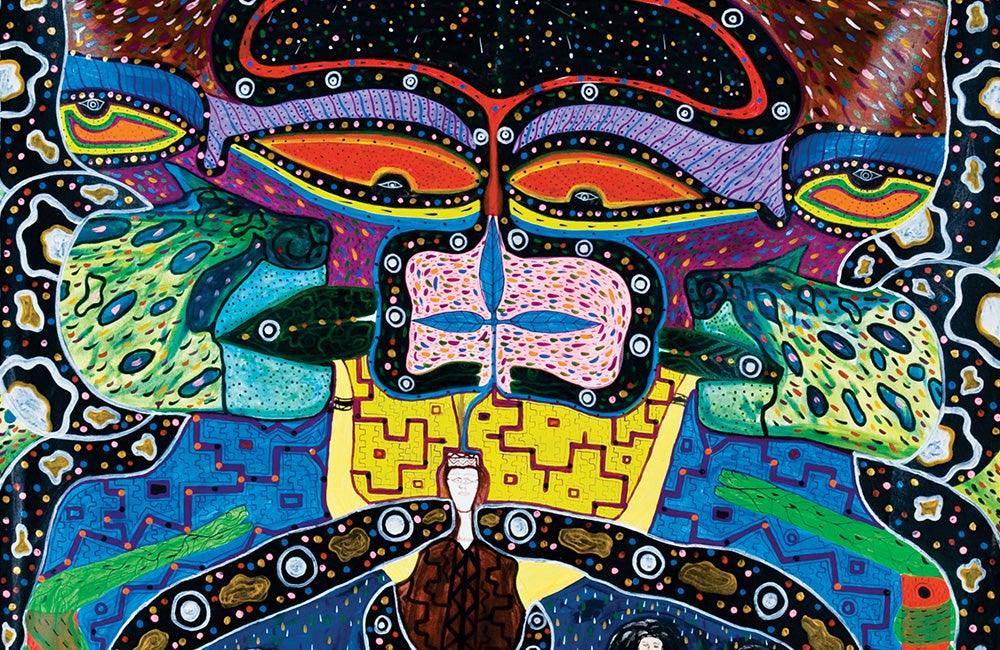First published: Fall 2015
Interest in “ethnic”, Native American, shamanic, visionary figuration in art and tourist markets has been growing. A hybrid expression, it combines figurative Western art, indigenous art and “vegetalist” shamanism, which is based on the ritualistic use of various “power” and “master” plants, such as tobacco and the psychedelics peyote, ayahuasca and toé. These are entheogenic hallucinogens which are used in spiritual, shamanic or religious contexts.

The precursor of the creative movement was Pablo Amaringo (1938–2009), an acclaimed Peruvian mestizo artist and connoisseur of shamanic traditions specific to indigenous and mestizo populations from the banks of the Ucayali River in Arequipa, Peru. Through collaboration with the anthropologist Luis Eduardo Luna, he founded the specialised Amazonian school of painting Usko-Ayar (“Spiritual Prince”) in Pucallpa, deep in the heart of the Peruvian Amazon.
While some concepts and techniques of academic art are incorporated, Usko-Ayar is deeply bound to the spiritual experiences from hallucinogenic plants. The artist reproduces the visions from dreams considered a fundamental source of knowledge in all shamanic cultures. Traditionally, the artist realises his or her paintings during ceremonies where (s)he paints traditional kené geometrical forms on the participants’ faces – the quintessential Shipibo aesthetic form and and an identity marker. The ritual, art (as a creation of virtual and physical images) and shamanism are “mediation techniques” that depict a reality the naked eye cannot perceive.

This is the source of inspiration for Filder Agustín Peña, a shaman/healer from the Shipibo tribe, whose works reflect the fundamental aspects of an ancestral cultural universe. Peña’s work revolves around an “astral journey” undertaken during shamanic sessions that are punctuated by encounters with spiritual entities in woodland, celestial and aquatic areas, which both animate the Shipibo mythology and partner the shaman during their sessions. Amid the paintings’ protagonists one can find Ronin the anaconda, “ the Mother of Waters” (“mother”, ibo, refers to the “boss”, “master” or “owner”, as well as “the principle of life”) and mistress of all aquatic animals; Ino, the jaguar and wildlife custodian; Bari, the sun, who is protective and paternal towards humans; Oshe, the moon, an incestuous brother who became a celestial body; Jenen Yoshin, “the spirit of the waters”, homologous to our mermaids, whose singing draws careless youth into her territory; Yoshin, “spirit”, who evokes ambivalent characters (“little devils”) that are both benefactors and evil; and Joshin Coshoshca, the pink dolphin, who is extremely dangerous due to his ability to transform into human form to seduce Shipibo women and impregnate them with disabled children.
This is an article extract; read the full article in Raw Vision #87




